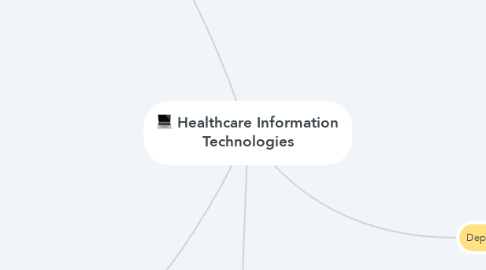
1. Roles
1.1. "New" Roles
1.1.1. Leadership
1.1.1.1. Chief Population Health Officer
1.1.1.2. Chief Experience Officer
1.1.1.3. Chief Clinical Transformation Officer
1.1.1.4. Chief Strategy Officer
1.1.1.5. Chief Information Officer
1.1.1.6. Chief Knowledge Officer
1.1.2. Clinical
1.1.2.1. Care Coordinator
1.1.2.2. Navigator
1.1.2.3. Medical Scribe
1.1.2.4. Telehealth Professional
1.1.3. Technological
1.1.3.1. Clinical Documentation Specialist
1.1.3.2. ICD-10 Coder
1.1.3.3. Healthcare Informatics Professional
1.2. Previous Roles
1.2.1. Record Keepers
1.2.2. Switchboard Operator
1.2.3. Leech Collector (for blood) yikes!
1.2.4. Office Clerk
1.3. School Programs
1.3.1. BS/MS Health Information Management
1.3.2. BS Community Health Education
1.3.3. BS Health Sciences
1.3.4. BS Healthcare Administration (Health Information Management/Patient Safety and Quality)
1.3.5. MS Healthcare Administration
1.3.6. MPH/Public Health BS
2. Landscape
2.1. Past
2.1.1. Storage
2.1.1.1. Paper Charting
2.1.2. Communication
2.1.2.1. Verbal
2.1.2.2. Fax
2.2. Present/Future
2.2.1. Storage
2.2.1.1. Electronic
2.2.2. Communication
2.2.2.1. Verbal
2.2.2.2. Text/Phone
2.2.2.3. Email
2.2.2.4. Through patient charting
2.2.2.5. Fax
3. Purpose
3.1. Electronic Records
3.1.1. Easier Storage
3.1.2. Sharing records is easier
3.2. Medical Devices
3.2.1. Pace Maker
3.2.2. Heart Rate Monitors
3.2.3. Insulin Pumps
3.3. Improve Medicine
3.3.1. Technology allows for more accurate medicines
3.4. Create Vaccines
3.4.1. Technology allows for better creation of vaccines
3.5. Increase Quality of Care
3.5.1. Better Patient Charting
3.5.2. Faster Office Visits
4. Departments
4.1. Ambulatory (Outpatient)
4.1.1. Wellness
4.1.1.1. Dentist/Orthodontist
4.1.1.2. Dermotologist
4.1.1.3. Nutrition Counseling
4.1.1.4. etc.
4.1.2. Treatment
4.1.2.1. Same-Day Surgery
4.1.2.2. Substance Abuse Clinics
4.1.2.3. Chemotherapy
4.1.2.4. Other
4.1.2.4.1. Physical Therapy
4.1.2.4.2. Occupational Therapy
4.1.2.4.3. Speech Language Pathology
4.1.2.4.4. Behavioral/Mental Health
4.1.3. Rehabilitation
4.1.3.1. Post-Operation
4.1.3.2. Substance Abuse
4.1.4. Diagnosis
4.1.4.1. X-Ray
4.1.4.2. MRI
4.1.4.3. Various Lab Testing
4.1.4.4. Blood Testing
4.2. Inpatient
4.2.1. Hospitals
4.2.1.1. Community
4.2.1.2. Teaching
4.2.1.3. Public
4.2.1.4. Private Non-Profit
4.2.1.5. Proprietary
4.2.1.6. General/Specialty
4.2.1.7. Rural
4.2.1.8. Osteopathic
4.2.1.9. Acute Care
4.2.1.9.1. Trauma Care & Acute Care Surgery
4.2.1.9.2. Emergency Care
4.2.1.9.3. Urgent Care
4.2.1.9.4. Short-Term Stabilization
4.2.1.9.5. Prehospital Care
4.2.1.9.6. Critical Care
4.2.1.10. Critical Access
4.2.2. Rehab Facilities
4.2.2.1. Physical
4.2.2.2. Occupational
4.2.2.3. Speech
4.2.2.4. Post Surgery
4.2.2.5. Stroke/Brain Injury
4.2.3. Federally Funded Healthcare Institutions
4.2.3.1. Veterans Health Administration
4.2.3.2. Military Medicine
4.2.3.3. Indian Health Services
